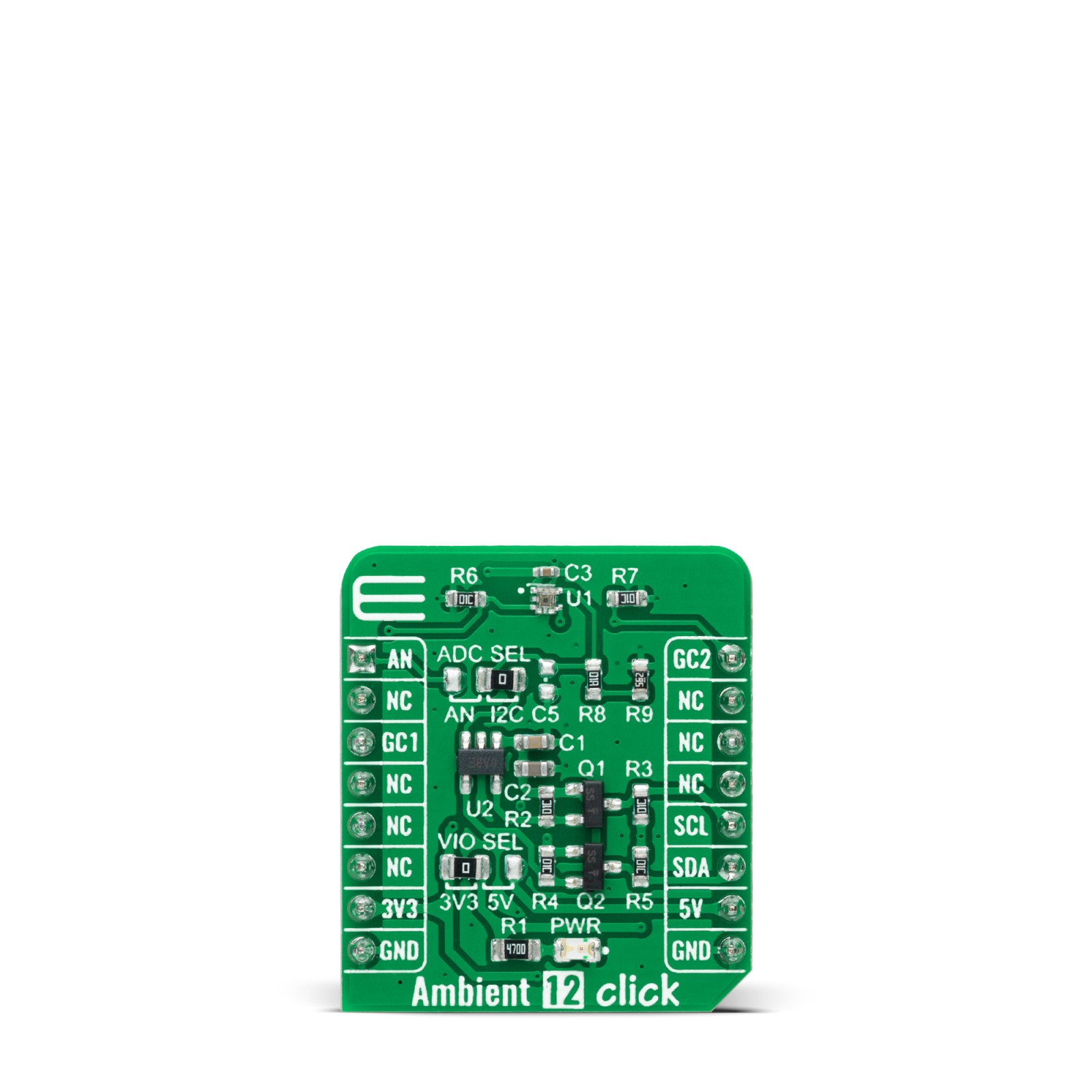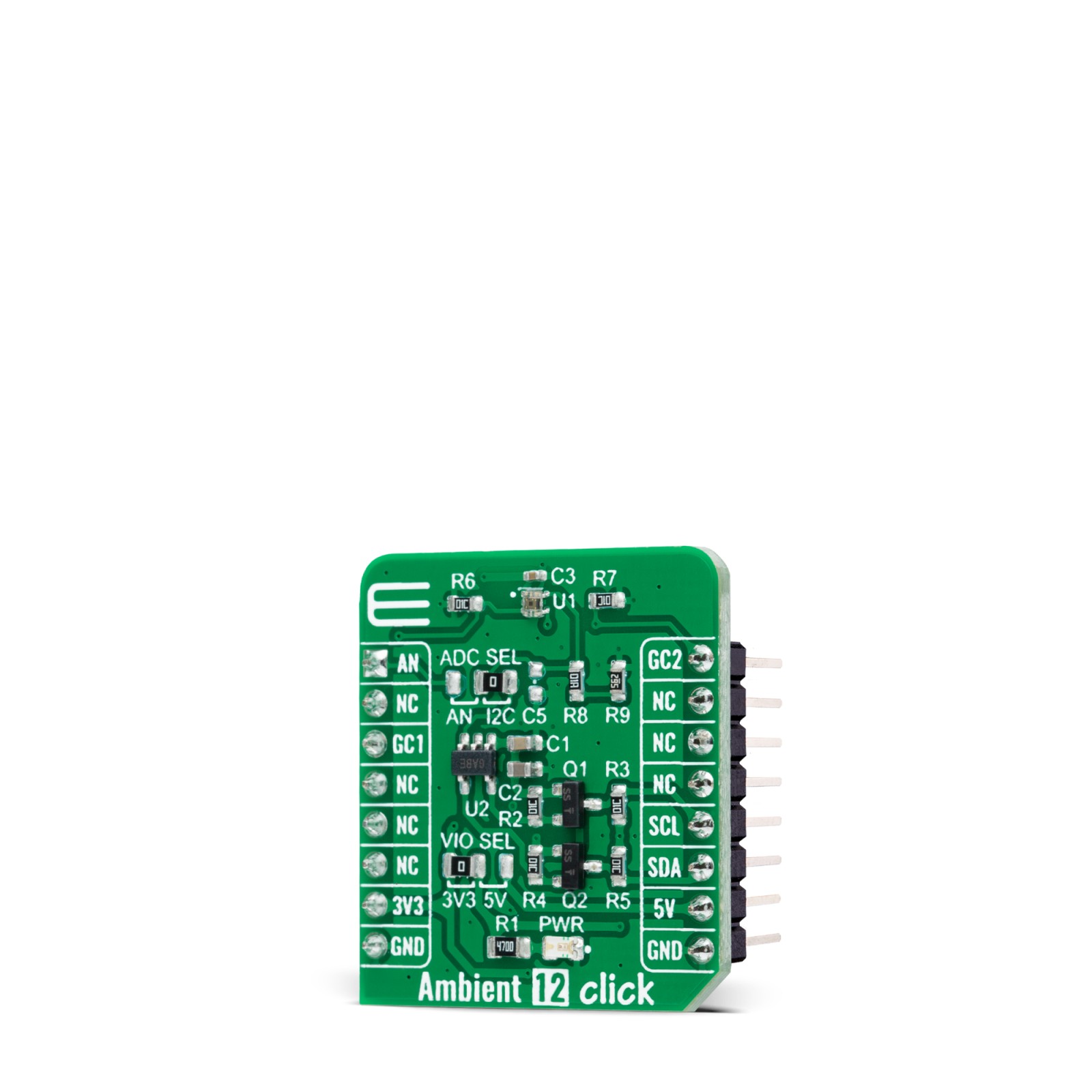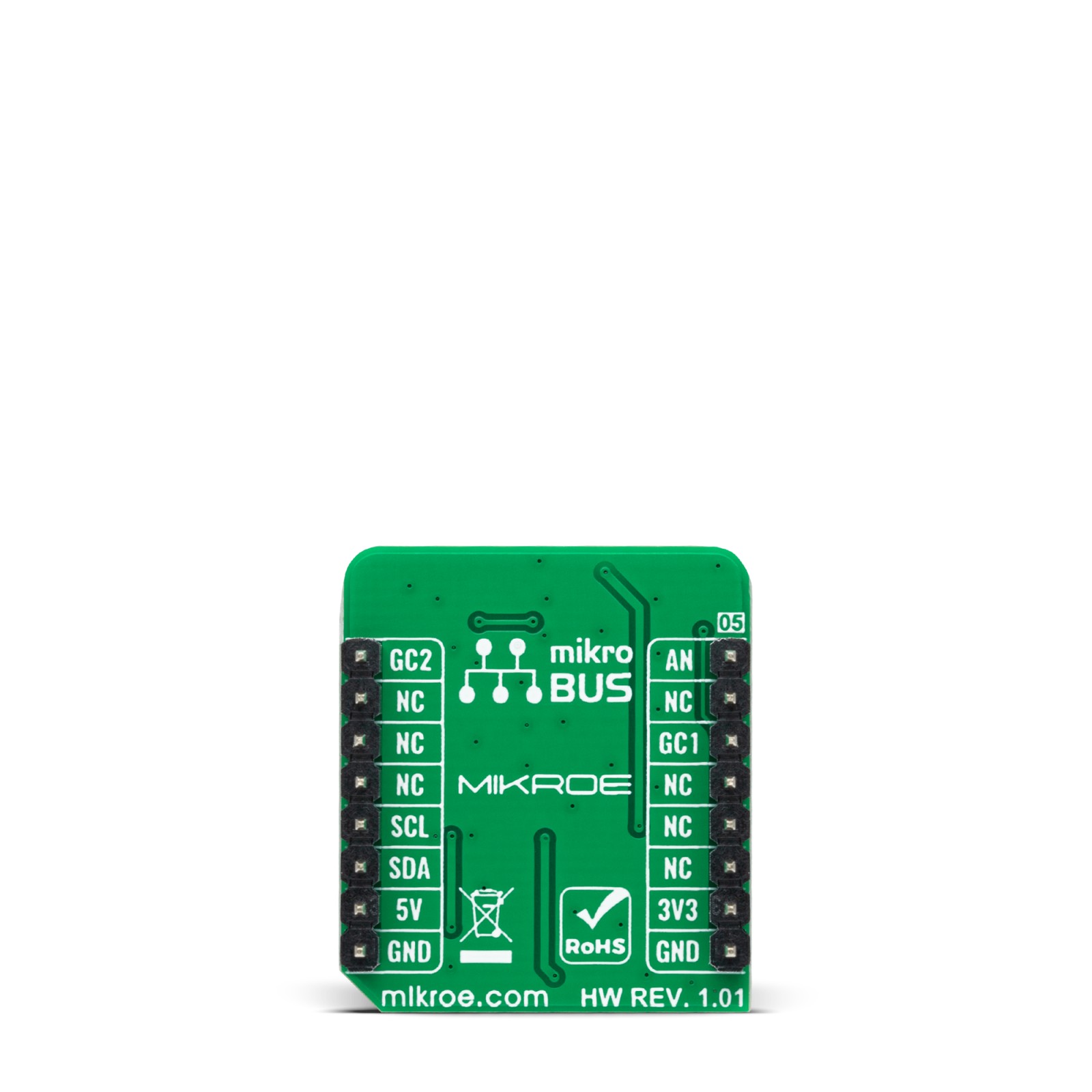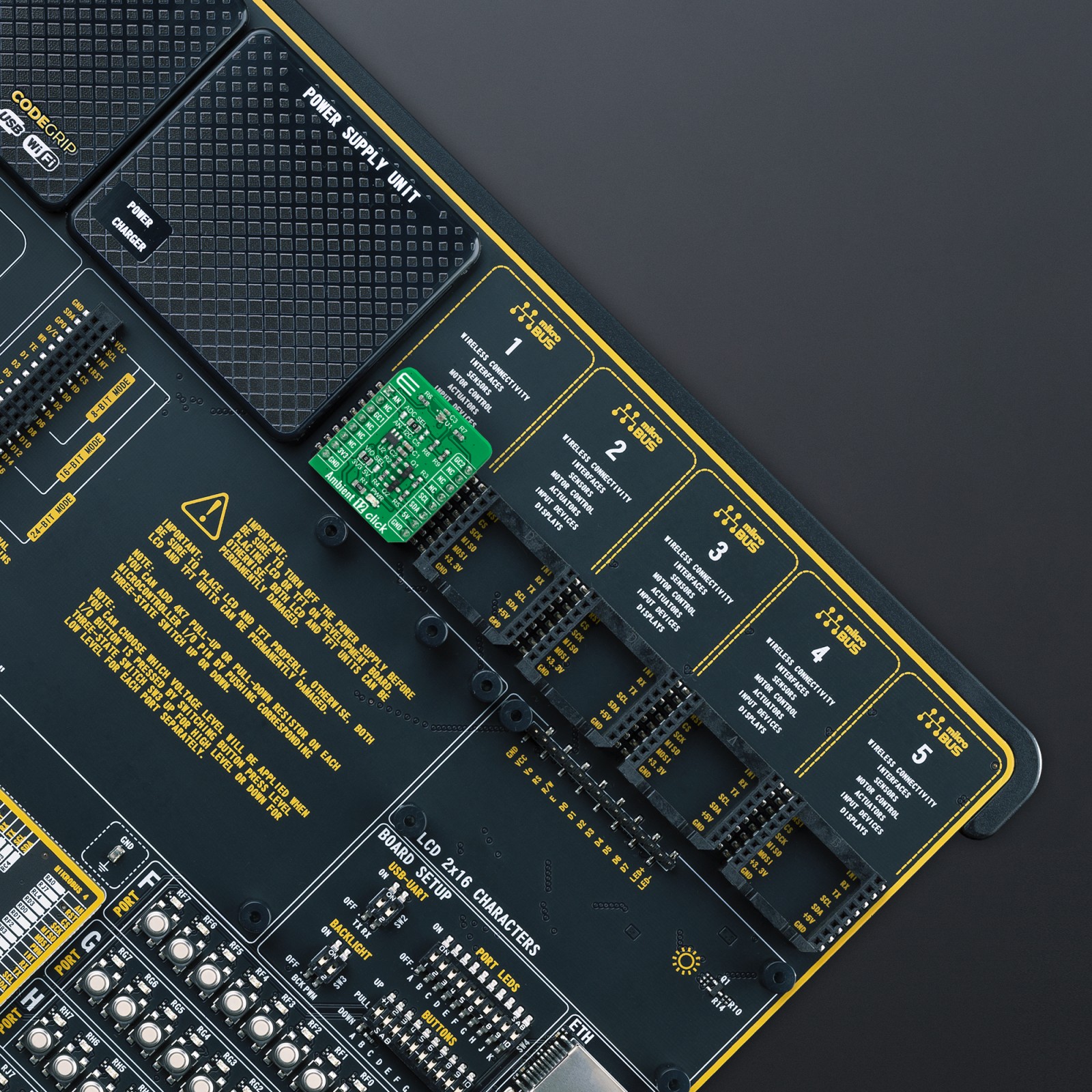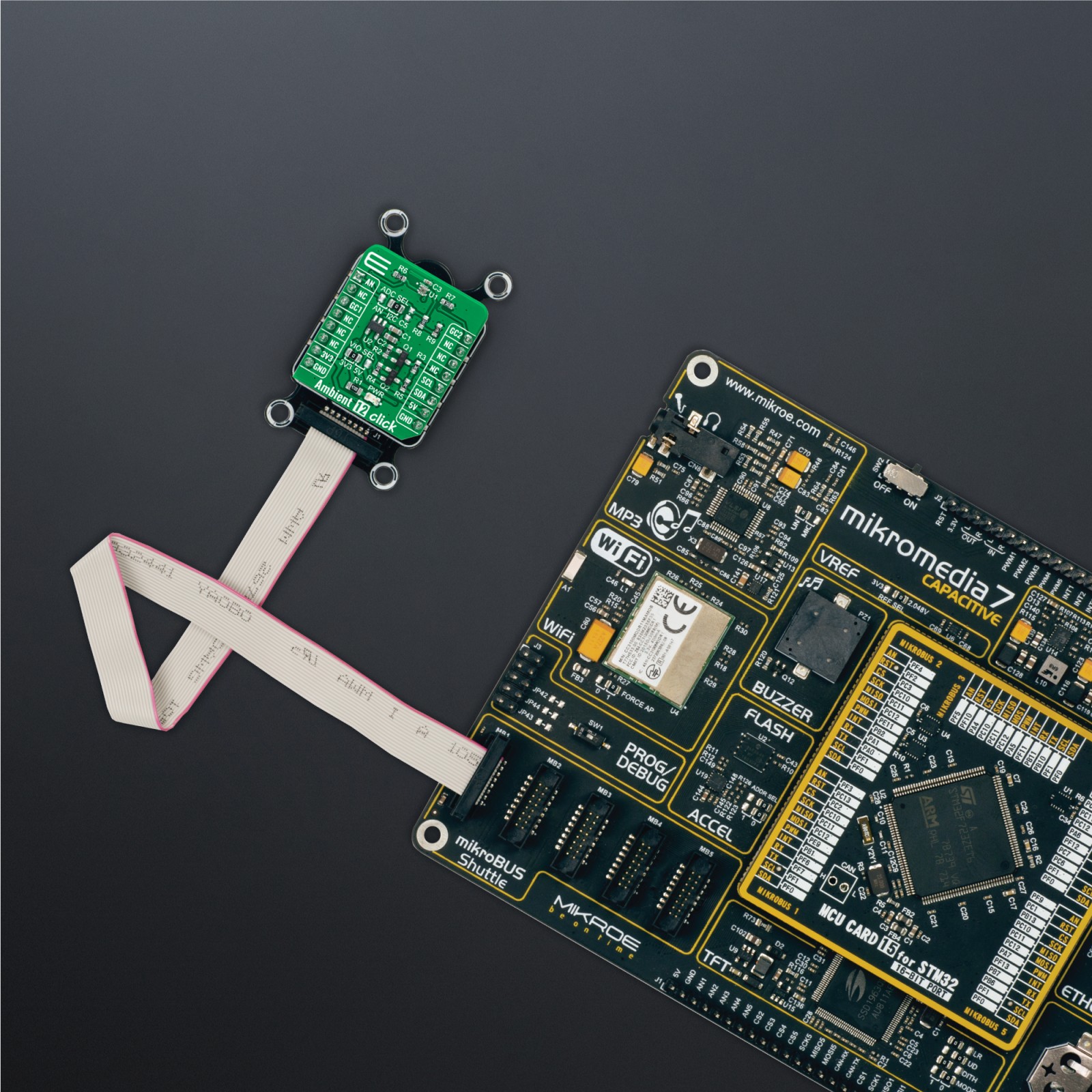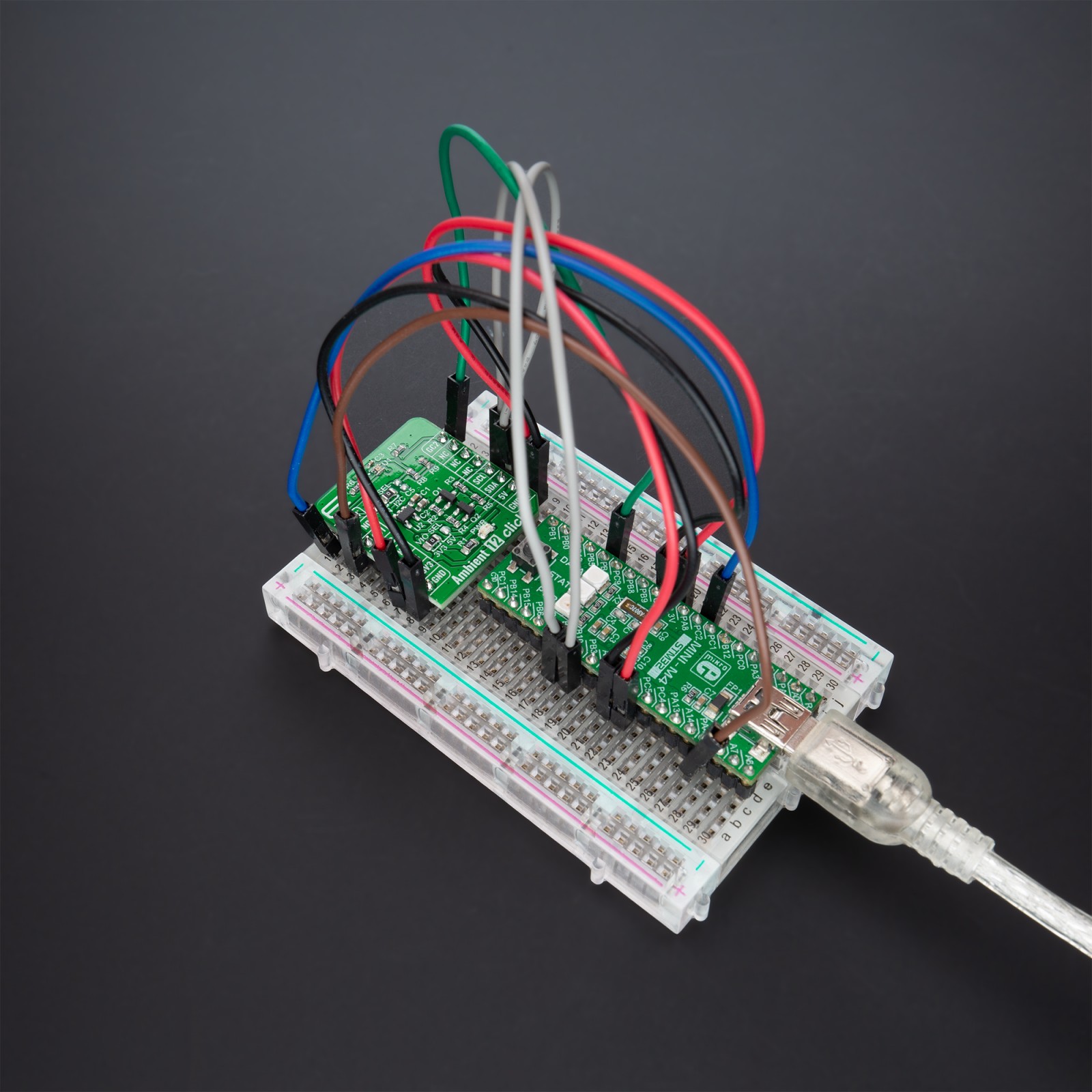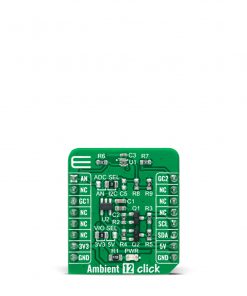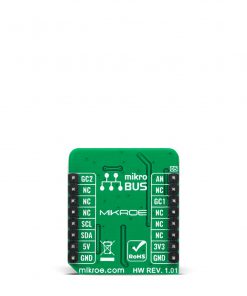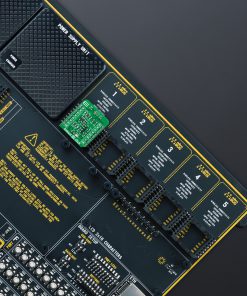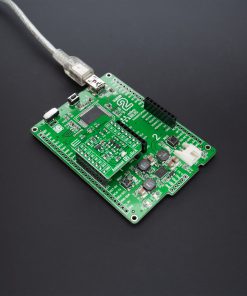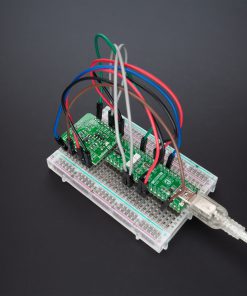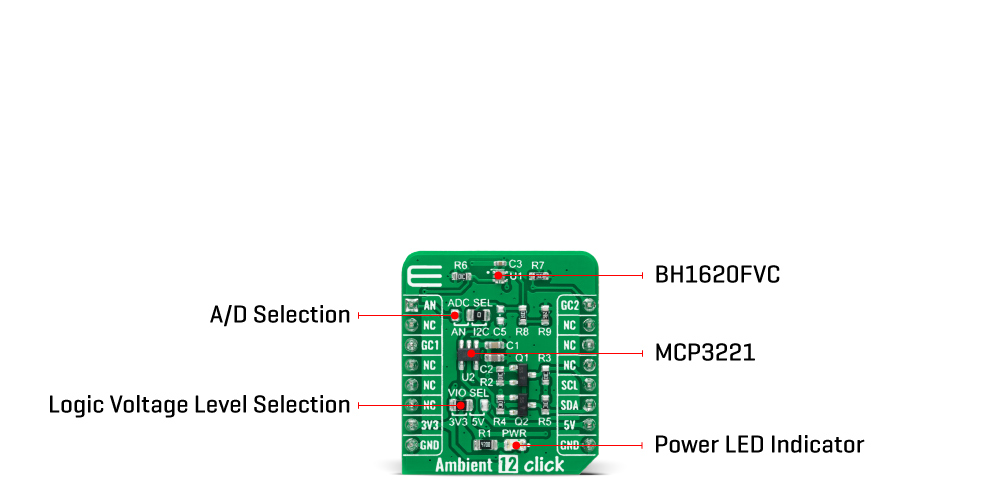Subtotal: R330.00
Ambient 12 Click
R315.00 ex. VAT
Ambient 12 Click is a compact add-on board used to sense the amount of the present ambient light. This board features the BH1620FVC, an analog current-output type ambient light sensor from Rohm Semiconductor. It is characterized by spectral sensitivity close to human eyes sensitivity and outputs current in proportion to brightness. It also has four configurable modes of operation, shutdown mode in association with three gain modes, and low sensitivity variations of +/-15%. This Click board™ is the most suitable for obtaining ambient light data for adjusting brightness in applications that require power saving and better visibility.
Ambient 12 Click is supported by a mikroSDK compliant library, which includes functions that simplify software development. This Click board™ comes as a fully tested product, ready to be used on a system equipped with the mikroBUS™ socket.
Stock: Lead-time applicable.
| 5+ | R299.25 |
| 10+ | R283.50 |
| 15+ | R267.75 |
| 20+ | R257.67 |

 LPG Click
LPG Click 